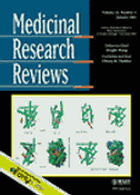
“Cannabinoid receptors (CBR), including CB1 and CB2 have been therapeutic targets for a number of conditions.
Recently, splice variants of the CB1R have been identified in humans.
The isoforms differ in their N-terminus sequence and pharmacological activity relative to the CB1R, as a result, the differentiation between the CB1 receptor and its isoform is required.
As a result, a selected reaction monitoring mass spectrometry (SRM-MS) method was developed for the quantitation of CB1 and the CB1b isoform in CHO cells transduced with CB1 and CB1b.
The SRM-MS protocol was assessed with isotopically labeled peptide standards and had high reproducibility of intra-day assay (CVs from 1.9 to 4.3% for CB1 and 0.5 to 5.9% for CB1b) and inter-day assay (CVs from 1.2 to 5.2% for CB1 and 1.2 to 6.1% for CB1b).”









